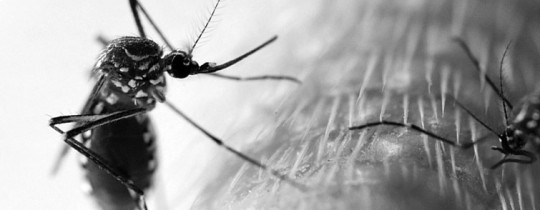Yellow Fever

Yellow fever is an infection spread by mosquitoes. Many patients suffer jaundice, which is the yellow pigmentation of the skin; hence the name “yellow” fever. Yellow fever is responsible for 30 000 deaths annually, and approximately half of severely affected patients who do not receive treatment will die from yellow fever. The number of cases has increased over the last 20 years due to deforestation, climate change, urbanization, and a declining immunity to the infection present in the population. Therefore, yellow fever is classified as a re-emerging disease. It is thought to have originated in Africa before being introduced to South America via the slave trade in the 16th and 17th centuries. Thus, it is endemic in the tropical areas of Latin America and Africa. The WHO provides many key facts on yellow fever, as well as different prevention options to help limit the spread of the disease and prevent epidemics.
Symptoms
After an incubation period of 3-6 days, symptoms begin to appear. Yellow fever is divided into 3 stages. In stage 1, a fever, headache, nausea, muscle and joint aches, chills and jaundice occur. These symptoms last around 3-4 days before subsiding. When the symptoms begin to go away, stage 2 has begun. Stage 2 is called remission, and most people will recover at this stage. In 15% of cases however, yellow fever reaches stage 3: intoxication. This stage involves jaundice and a recurring fever, as well as abdominal pain and bleeding in the eyes and mouth. Bleeding in the gastrointestinal tract may cause vomit containing blood. This stage is fatal in about 20% of cases, although the mortality rate may reach 50% during severe epidemics. Some other symptoms include irregular heart beats, delirium, fever, muscle aches, seizures, and coma.
Causes
Yellow fever is caused by a virus which is carried and transmitted by mosquitoes. You will catch the disease if an infected mosquito bites you. The mosquito sucks the blood of an infected primate or person, at which point the virus reaches the mosquito’s stomach. It then enters the blood system and salivary glands, making the mosquito a carrier. The next time the mosquito sucks blood, it injects its infected salvia into the bite, allowing the virus to reach the blood stream of the bitten person, infecting them. Mosquitoes transmit the virus by carrying it from one host to another; this includes person to person, monkey to monkey, or monkey to human. Anyone can get yellow fever, although the elderly are at a higher risk for suffering a severe infection.
Prevention
There are different prevention techniques you can try if you live in an area where yellow fever is common, or are traveling to an area where it is common. Use mosquito repellents to decrease the chance of being bitten. Wearing clothing that completely covers your body and sleeping in screened housing also helps prevent mosquito bites. If you want to be absolutely sure, there is an effective vaccine available. Ask your doctor a few weeks before you leave to see if you should receive the yellow fever vaccination, because it takes the vaccine 10 days to become completely established. In about 1/5th of cases, the vaccine will cause flu-like symptoms to develop, although they are usually mild. In very rare cases, the yellow fever vaccination causes YEL-AVD, which can be fatal. Eliminating potential mosquito breeding sites and killing adult mosquitoes with insecticides can help reduce the risk of yellow fever, particularly during urban epidemics. While this may not halt the transmission of yellow fever completely, it buys time for vaccines to arrive and build immunity in the population.
Treatment
There is no specific treatment available to cure yellow fever, although the symptoms can be treated to help limit them. Some symptom treatments include dialysis for kidney failure, blood products for severe bleeding, and fluids through a vein. Antibiotics are used for any bacterial infections that may occur. Hospitalization is recommended for anyone suffering from yellow fever, since intensive care may be necessary due to rapid deterioration. For pain relief, pain killers can be used, although aspirin is not advised due to its anticoagulant effect.
